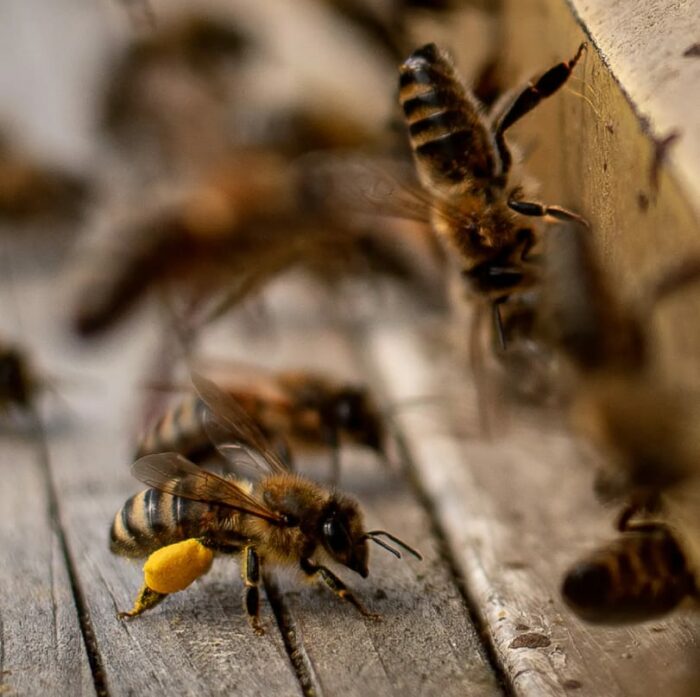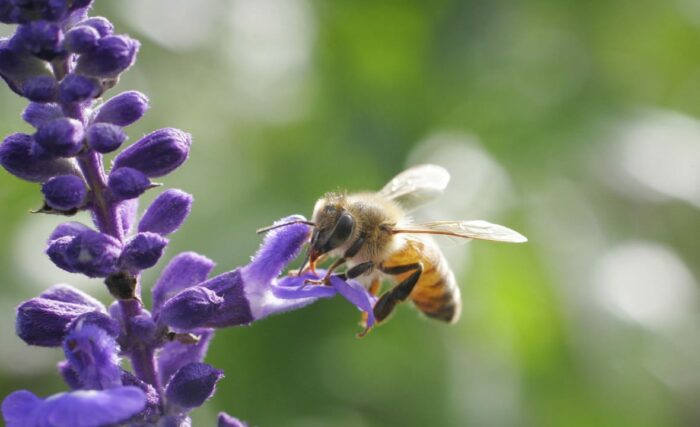Sustainability has become more than a buzzword; it is an urgent call to action for every conscientious individual. While we’ve witnessed a significant rise in households transitioning to solar power, striving toward sustainability goes beyond prominent examples.
Indeed, businesses and families alike can also embrace lesser-known yet equally powerful practices in their journey toward a greener future.
One such impactful contribution is bee-friendly gardening. Unlike the noticeable solar power panels for homes, this practice may not seem as significant at first glance. However, it has remarkable potential, supporting our fragile ecosystems while promoting biodiversity.
These grassroots initiatives, like bee-friendly gardening, truly underscore the vast range of possibilities within our path to sustainability. Let’s delve into the buzzing world of bee-friendly gardening and its undeniable role in nurturing a sustainable future.
The Decline of Bee Populations

Bees are facing a tough time, and there are a few key reasons behind their decline. One major problem is pesticides used in farming—they’re meant to protect crops but end up harming bees.
Another issue is the loss of bee-friendly spaces due to urban expansion and large farms. Climate change messes with the timing of when flowers bloom and when bees come out, making it hard for them to find food.
Invasive species and diseases, like the Varroa destructor mite, are also causing trouble for bees. What makes things worse is that these problems often team up, creating a big challenge for bee survival. The decline of bees isn’t just about them; it affects the plants they pollinate and our food supply.
Benefits of Bee-Friendly Gardening
Myriad benefits come with making your garden bee-friendly.
Pollination and Increased Crop Yields: By welcoming bees into our garden, we enlist natural pollinators that boost crop yields and improve the quality of fruits and vegetables. Bee-friendly gardening becomes a recipe for a bountiful harvest in our own spaces.
Biodiversity and Ecosystem Health: Choosing plants that attract bees creates a haven for various pollinators, adding vibrancy to our surroundings and strengthening the resilience of the entire ecosystem. It acts as a natural defense against pests and diseases.
Improved Soil Fertility and Structure: Bees contribute to soil health by enhancing aeration and nutrient cycling in their daily activities. This results in a garden with improved soil fertility and structure, providing an ideal environment for plant growth and sustainability.
Creating a Bee-Friendly Garden

Let’s break down the practical steps to bring your garden to life and make it a thriving bee haven.
Choosing Bee-Friendly Plants: Opt for native plant species, as they are well-adapted to the local ecosystem and provide a familiar and reliable food source for bees. Select plants rich in nectar and pollen, such as lavender, sunflowers, and native wildflowers.
Avoiding Harmful Pesticides: Pesticides often create another by harming beneficial insects like bees. Embrace natural alternatives for pest control, such as introducing predator insects like ladybugs or using neem oil.
Designing a Bee-Friendly Landscape
Creating a bee-friendly garden is primarily about designing a space that beckons bees and supports their entire life cycle.
Incorporating Flowering Plants: Integrate a variety of flowering plants into your garden design, ensuring a continuous bloom throughout the growing season.
These flowers are not just pretty, but they ensure a consistent bee food supply. Imagine a colorful display, starting with crocuses in early bloom and ending with the late-season charm of asters.
Creating a Water Source: A thoughtfully designed bee-friendly garden includes a water source. This can be as simple as a shallow bird bath with stones for perching. Providing bees with a place to hydrate and cool down is a thoughtful addition that appeals to your garden.
Providing Nesting Sites: Beyond blooms, create spaces for bees to nest. Leave some bare soil for ground-nesting bees and consider adding bee hotels or bundles of hollow stems for other species. This comprehensive approach ensures your garden meets the diverse needs of different bee species, including the essential queen bee.
Educating the Family

The journey toward sustainability is more enriching when it becomes a family affair.
Teaching Children Bees: Begin by sharing fascinating facts about bees with your children. Illustrate their crucial role in pollination, using examples like how bees help plants produce fruits and vegetables. Create a “bee diary” together, encouraging children to observe and document bee activities in the garden. Consider incorporating fun, educational games that highlight the importance of bees in our ecosystem.
Involving the Family in Gardening: Make bee-friendly gardening a family activity. Everyone can help plant and take care of the garden. Give each person tasks like watering or weeding. This hands-on experience teaches practical skills and makes everyone feel responsible for the garden and its buzzing guests.
Promoting Responsibility: Use the garden to teach your family about responsibility. Talk about how their actions, like avoiding harmful pesticides, help protect bees and keep the environment healthy. Open up conversations about sustainability, letting everyone share ideas and learn from each other.
Overcoming Common Challenges
As with any worthwhile endeavor, bee-friendly gardening may present challenges. Addressing these concerns head-on ensures a smoother and more rewarding experience.
Addressing Misconceptions About Bees: Educate your family and neighbors about the gentle nature of bees. Share information on how most bees are not aggressive and only sting when provoked.
Consider organizing a small community event or workshop to dispel common misconceptions and promote a positive view of these crucial pollinators.
Dealing With Concerns About Stings: While bee stings are possible, they are rare if you respect the bees’ space. Emphasize the importance of gentle movements around bees and the avoidance of swatting. Create safe, bee-friendly areas away from busy spots in the garden.
Managing Garden Maintenance: Balancing the need for a well-maintained garden with the desire to provide a bee-friendly habitat requires thoughtful planning. Designate specific areas for manicured spaces and let other areas flourish naturally to cater to bees’ needs.
Takeaway

The big idea is that each small step makes a big difference in creating a sustainable future. We’ve learned that we don’t need to tackle global problems all at once.
Instead, by choosing the right plants, avoiding harmful chemicals, and involving our families, we can improve our spaces and contribute to a healthier planet. Your garden can symbolize hope, reminding us that we have the power to nurture a greener tomorrow, one blossom at a time.
 Jessica Paster The Future is Green
Jessica Paster The Future is Green